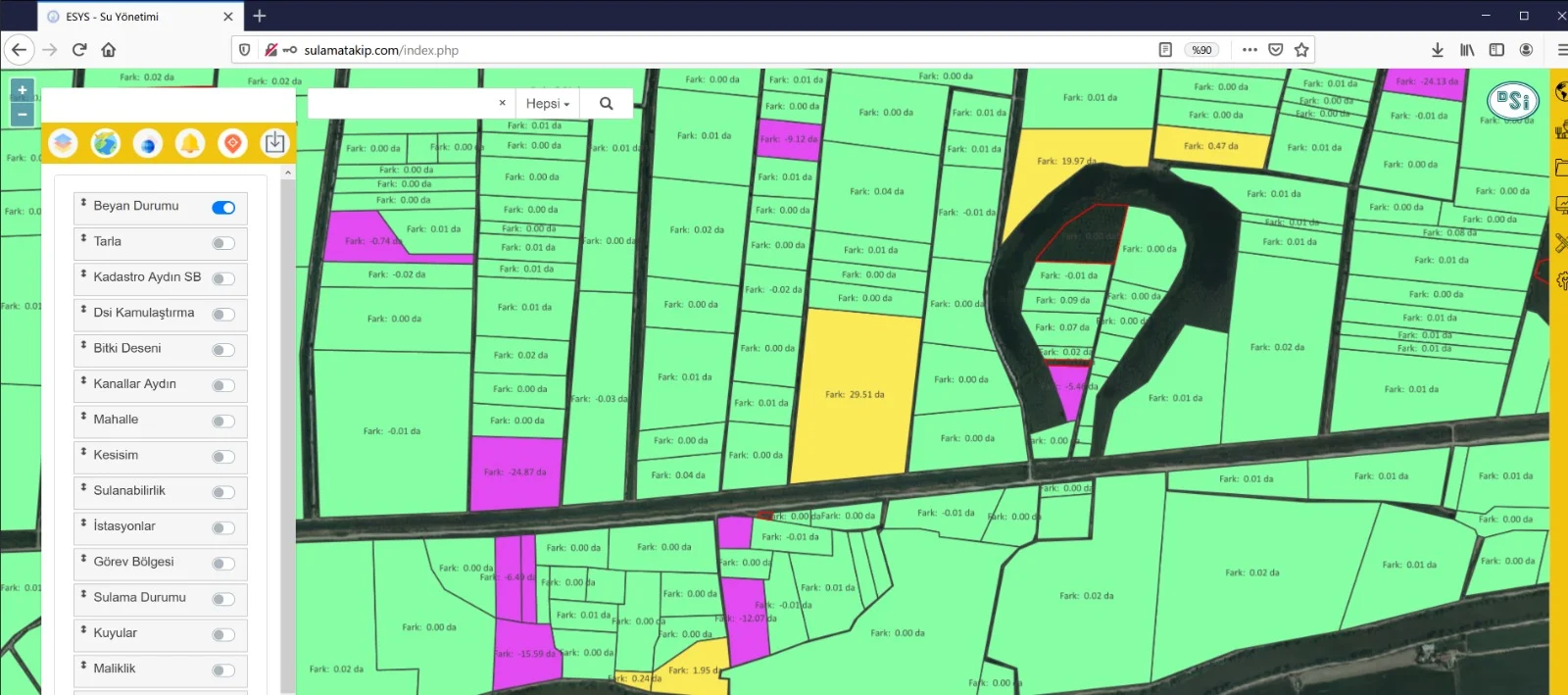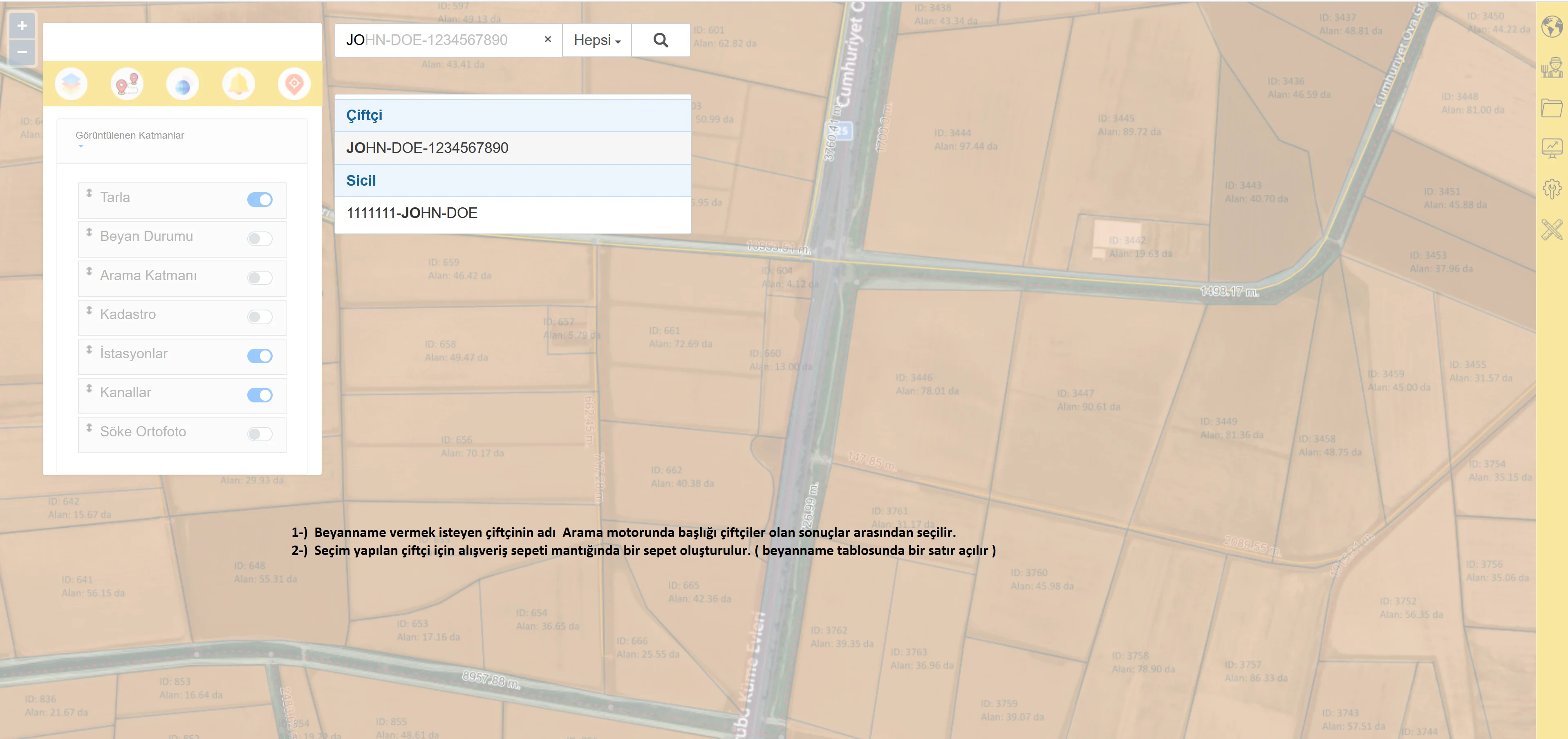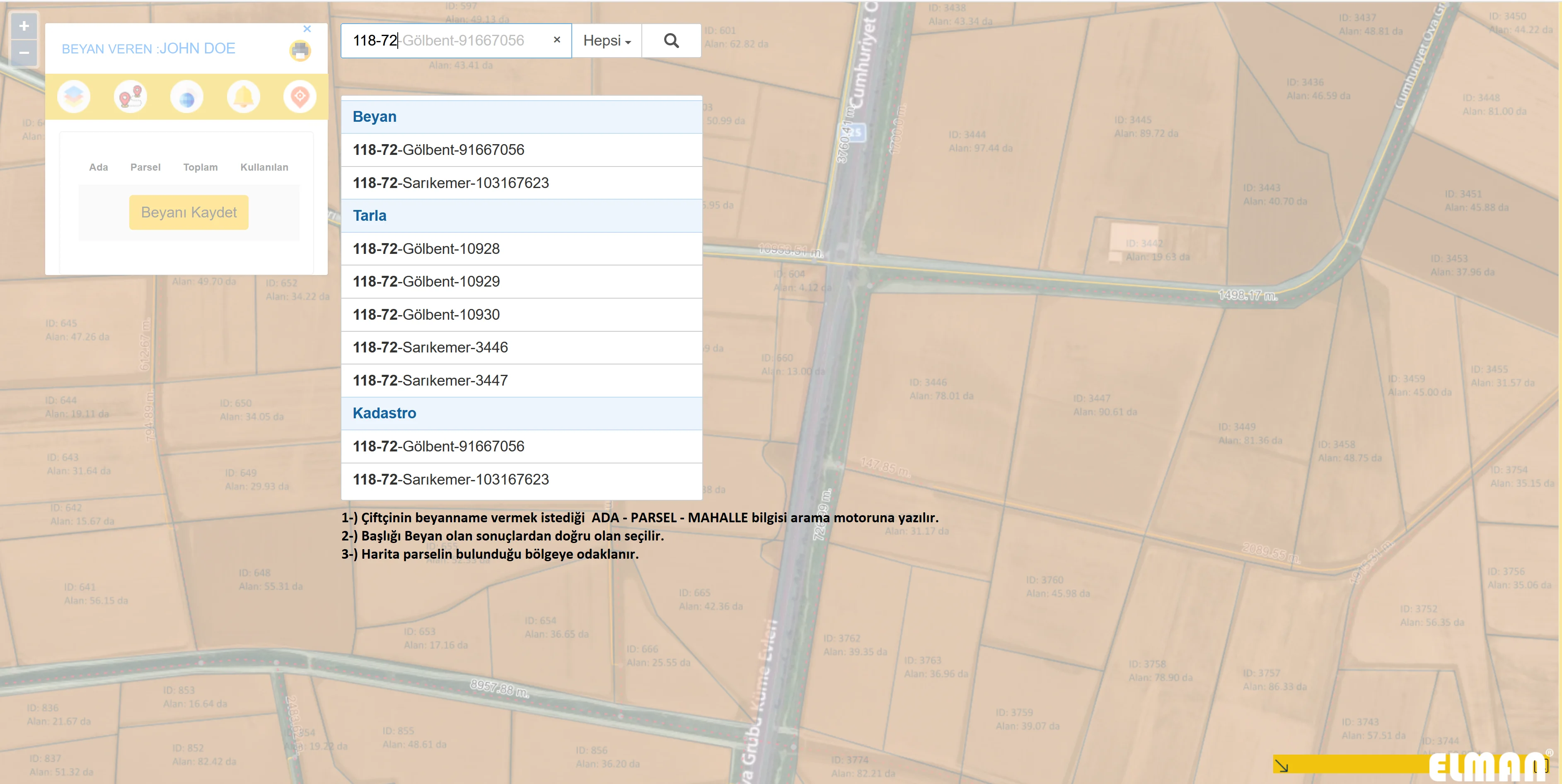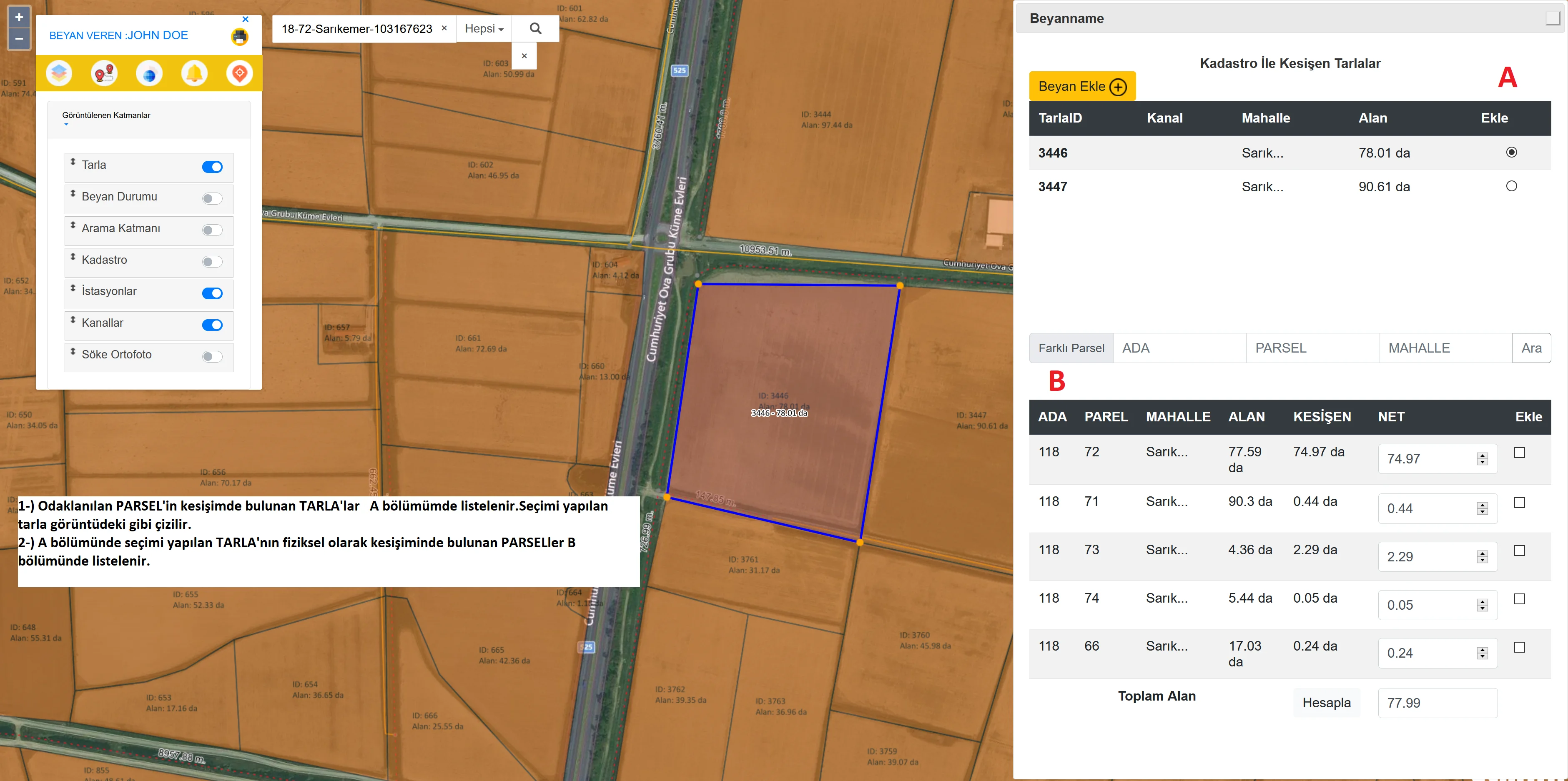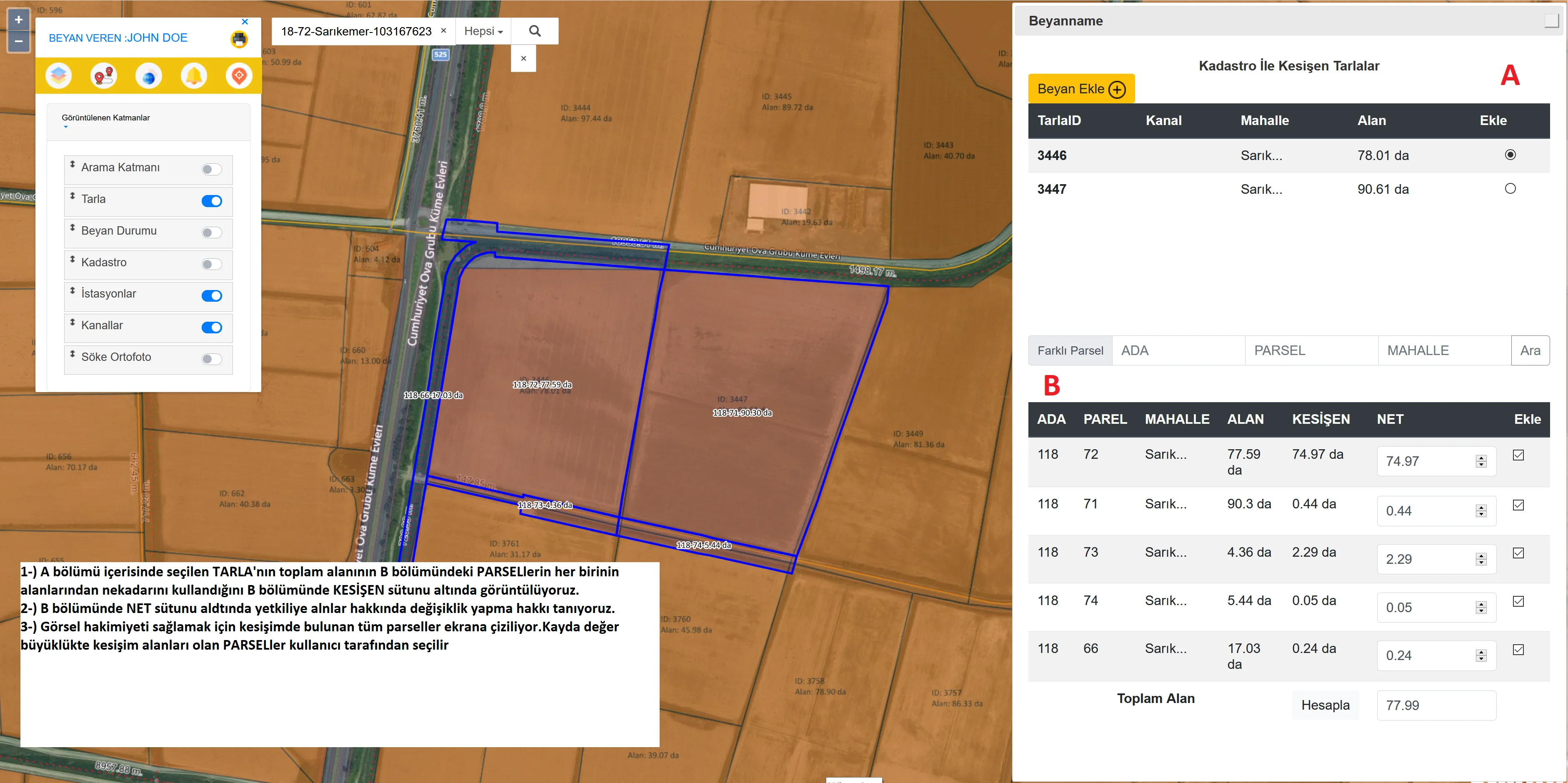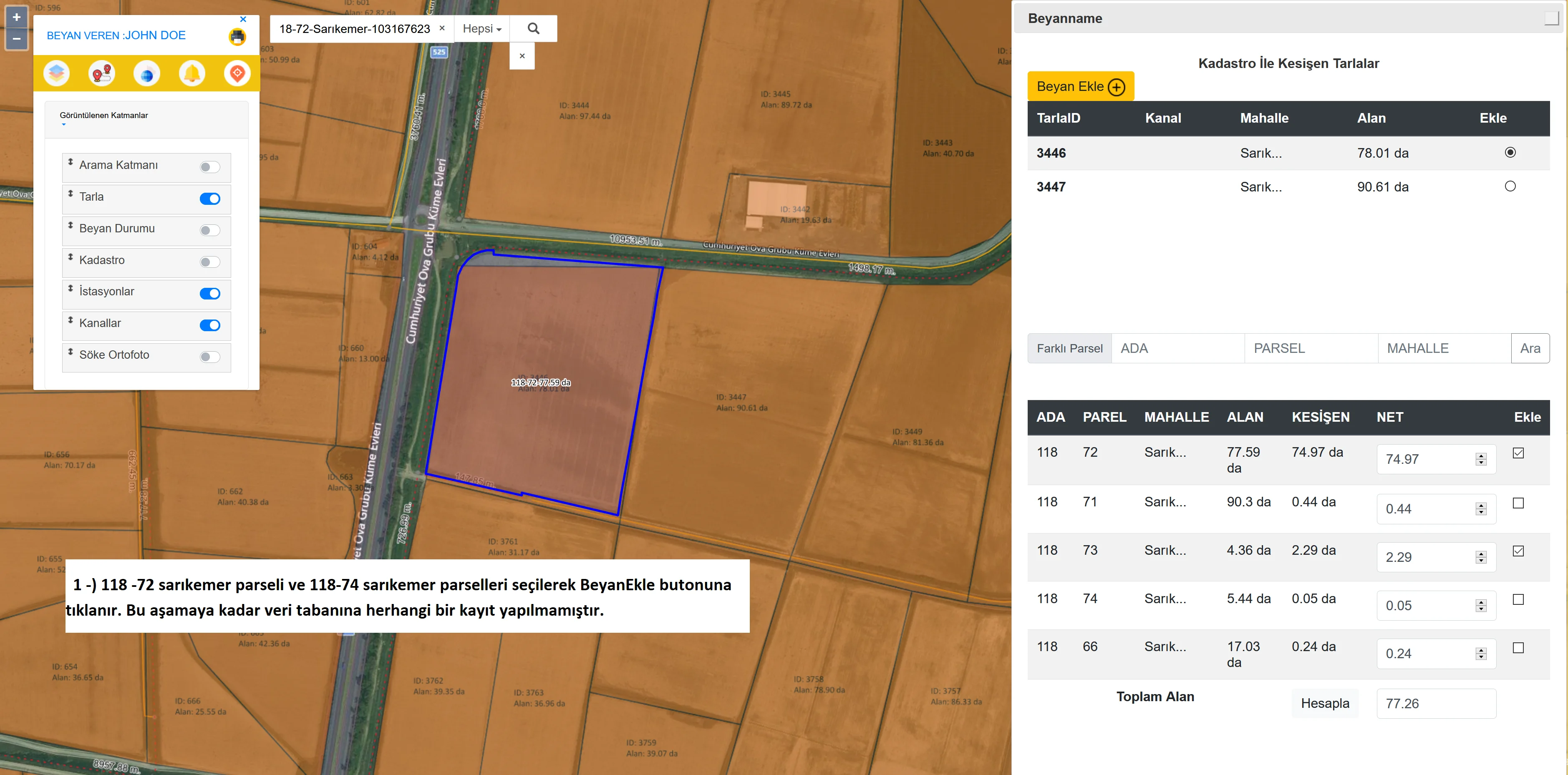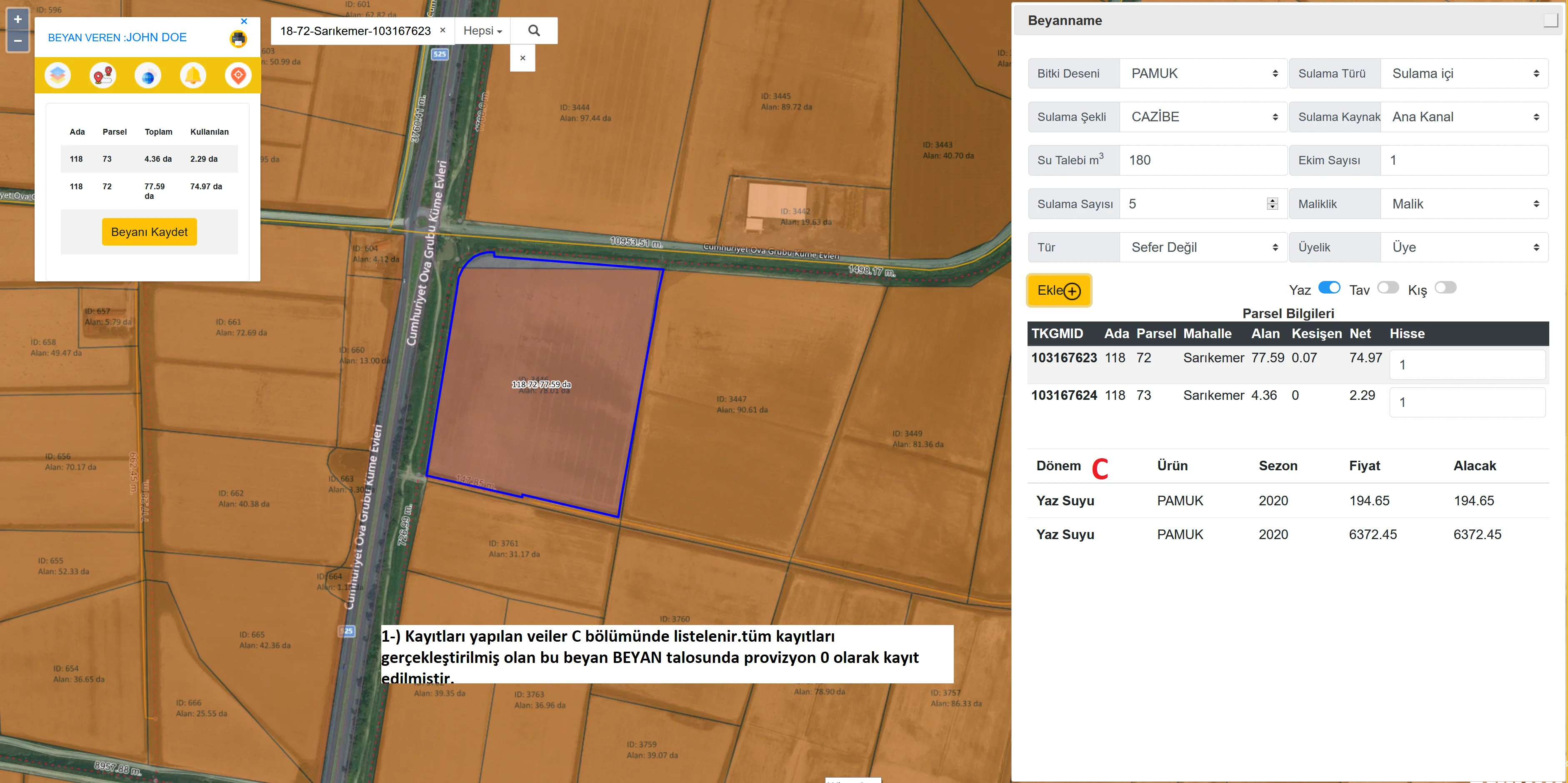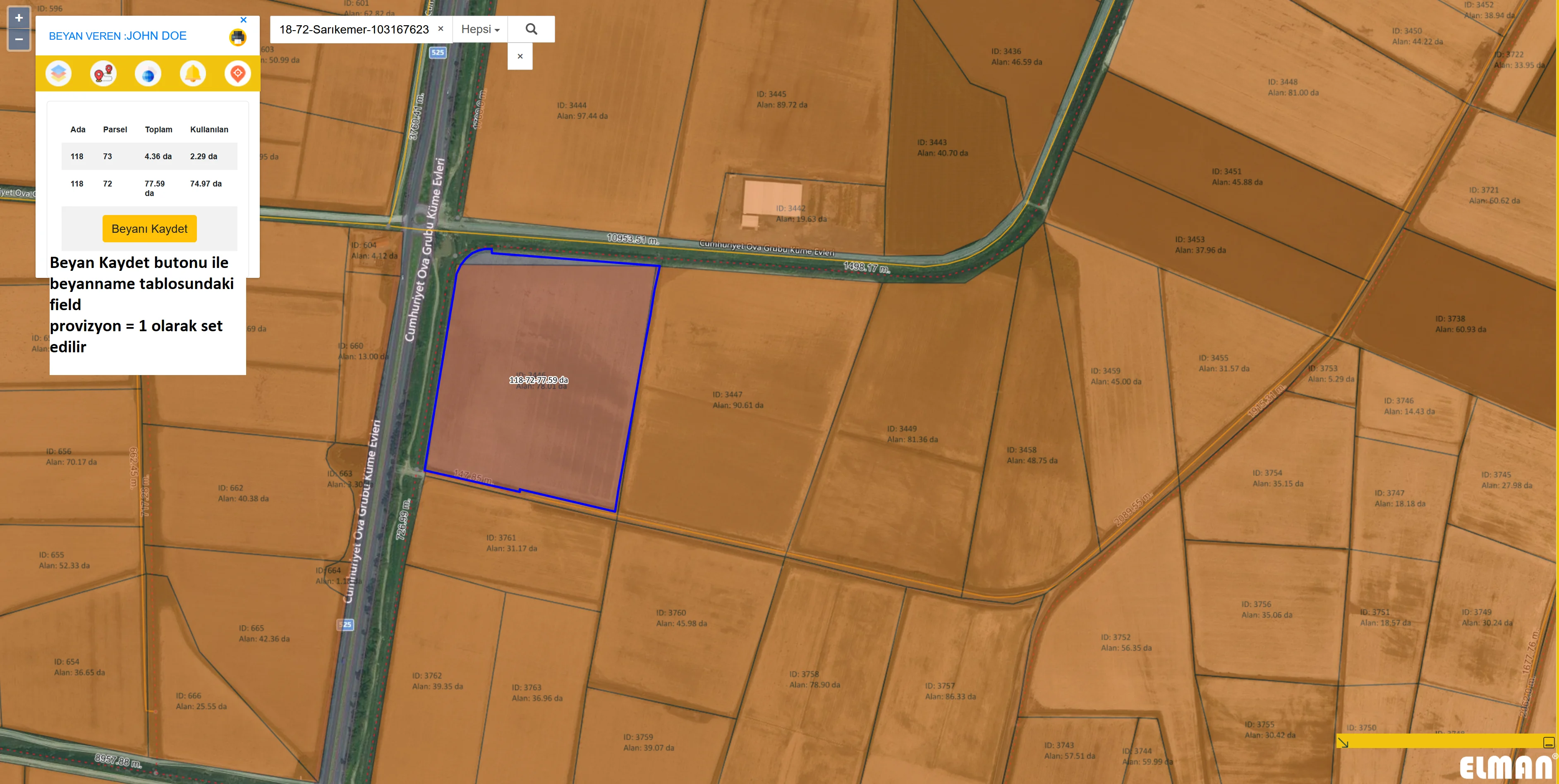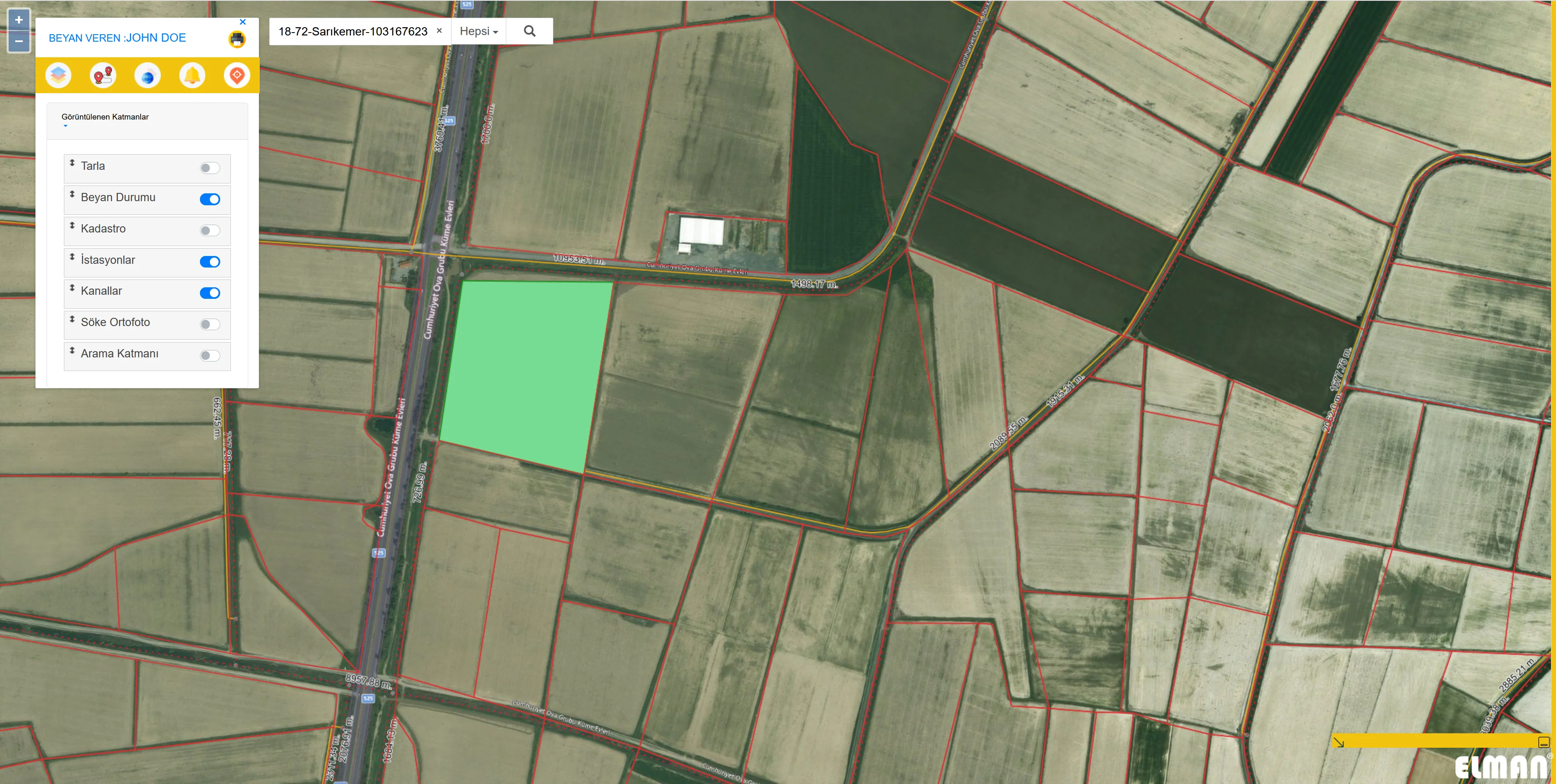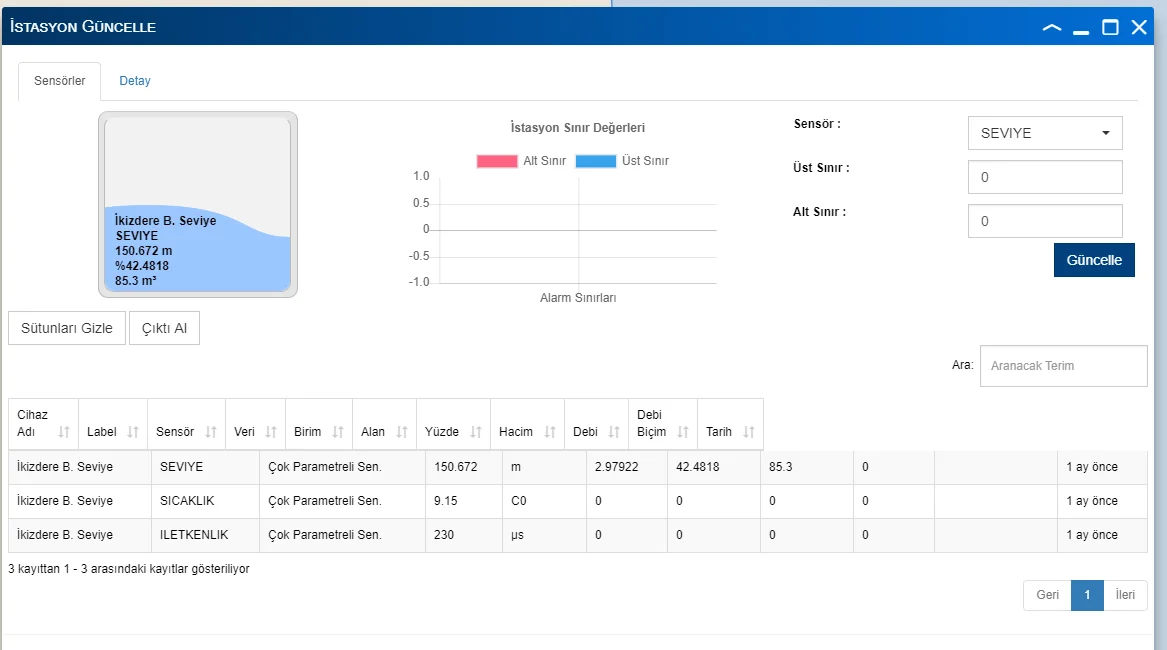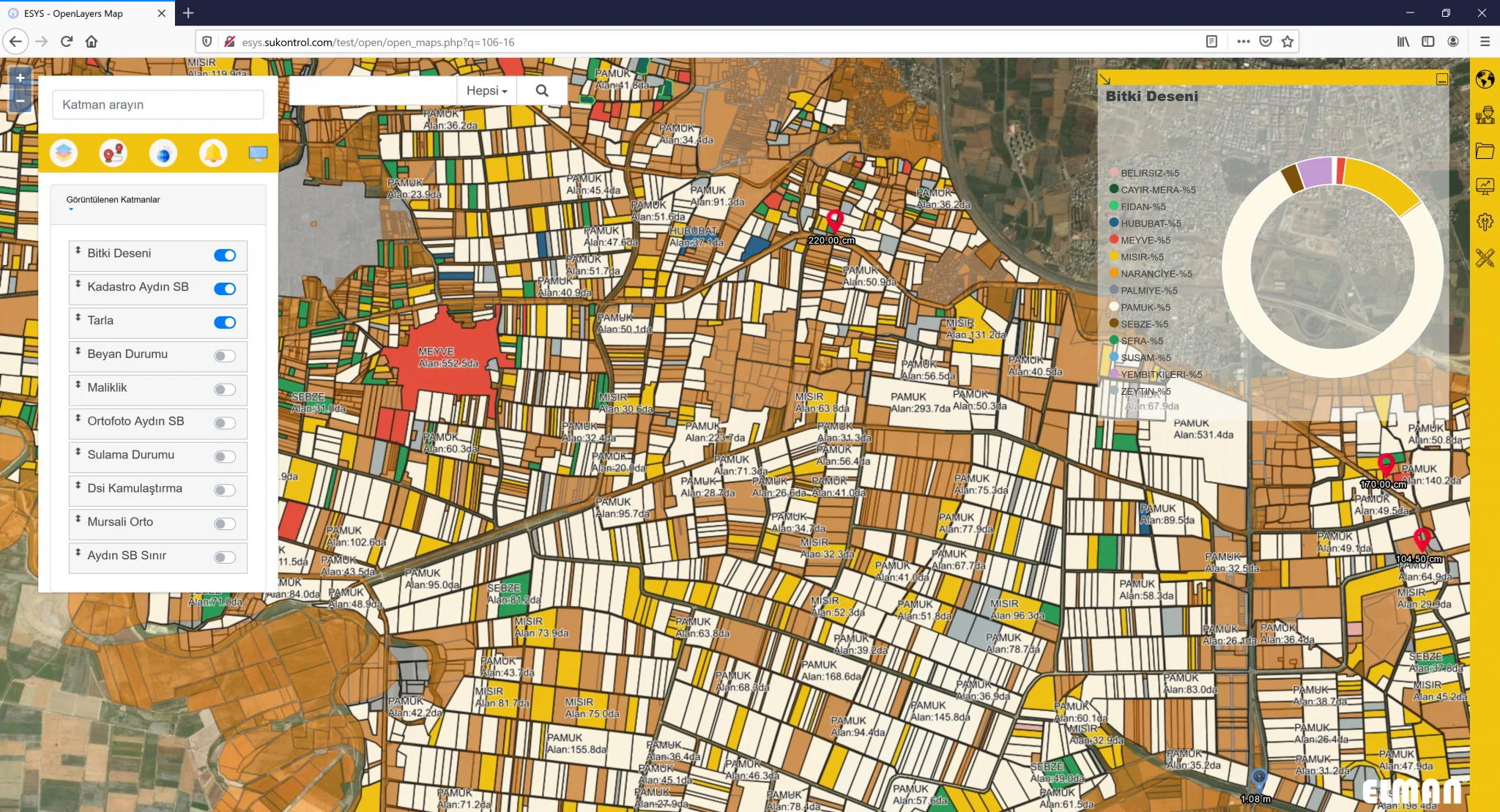Aydın CBS Tabanlı Elk. Su Yönetim Sistemi
Elektronik Su Yönetim Sistemi Projemiz, birbirinden farklı kategorideki birçok ölçüm verisinin takibinin, kontrolünün, analiz ve raporlamasının tek bir veritabanında biriktiği ve yönetildiği, mekanik ile yazılımın birleştiği bir ana yönetim sistemidir.
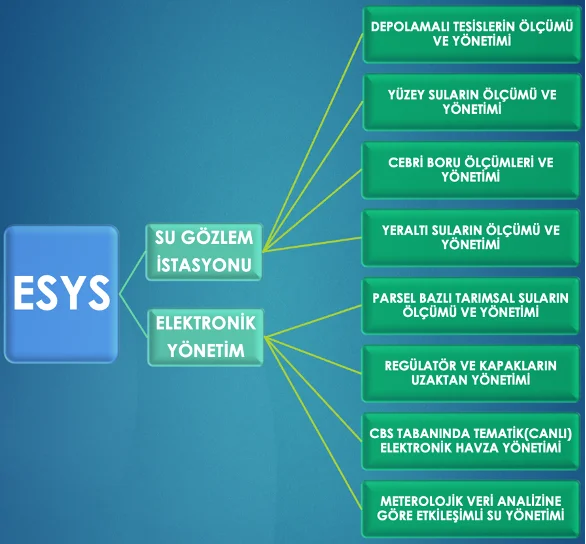
Aydın CBS Tabanlı Elektronik Su Yönetim Sistemi
Aydın Elektronik Su Yönetim Sistemi (ESYS), su kaynaklarının verimli bir şekilde yönetilmesini sağlamak amacıyla, mekaniğin yazılım ile entegre olduğu, çok katmanlı bir yönetim altyapısı sunmaktadır. Bu sistem, farklı kategorilerdeki ölçüm verilerinin bir arada toplandığı ve tek bir veritabanında işlendiği bir çözüm sunar. Yazılım altyapısı tamamlandıktan sonra, her bir ölçüm noktasına uygun cihazlar yerleştirilir ve bu cihazlar, su seviyeleri, debi, basınç gibi su yönetimiyle ilgili kritik verileri anlık olarak izler. Ayrıca, uygulama sahasında yapılan ortofoto çalışmaları ile ölçüm noktaları ve parselasyon bilgileri sisteme entegre edilir. Bu veriler, sayısal olarak işlenir ve sistemde her bir noktaya ait detaylı bilgi sunulur. Sistem, yalnızca verilerin izlenmesini değil, aynı zamanda bu veriler üzerinde analiz yaparak, su kaynaklarının optimize edilmesini sağlar. Su yönetiminin her adımında en doğru kararların alınabilmesi için gelişmiş raporlama ve veri görselleştirme araçları da içerir.Aydın CBS Tabanlı Elektronik Su Yönetim Sistemi, su yönetiminin her aşamasında entegre bir yaklaşım sunarak, su kaynaklarının daha verimli kullanılmasını sağlar. Yazılım ve donanım entegrasyonu sayesinde, veriler anlık olarak toplanır, analiz edilir ve en doğru kararların alınabilmesi için kullanıcılara sunulur. Bu sistem, yalnızca verilerin izlenmesini değil, aynı zamanda suyun sürdürülebilirliğini sağlamayı da hedefler, böylece su kaynaklarının yönetimi, daha verimli ve güvenli hale gelir.
Projenin Uygulama Aşamaları
1. Aşama Altyapı ve Ölçüm Sistemlerinin Kurulumu
Bu aşama, sistemin temel altyapısının oluşturulmasıdır. İlk olarak, su yönetimi için gerekli olan ölçüm sistemleri, belirlenen alanlara kurulur. Bu ölçüm cihazları; su seviyeleri, debi, sıcaklık, pH gibi parametreleri ölçer ve bu veriler anlık olarak merkezi bir sistemde toplanır. Aynı zamanda, uygulama sahasına ait ortofoto çalışmaları yapılır. Bu çalışma sayesinde, arazi üzerindeki ölçüm noktaları ve sınırları belirlenir, harita üzerinde dijitalleştirilir. Tüm bu veriler, sistemin veri tabanına yüklenir ve her bir ölçüm noktasına ait sayısal bilgiler işlenerek daha sonra kullanılabilir hale getirilir.
2. Aşama Veri İşleme ve Sayısal Modelleme
İkinci aşama, yüklenen verilerin sayısal olarak işlenmesi ve analiz edilmesidir. Ortofoto çalışmasından elde edilen veriler, harita üzerinde belirlenen parselasyon bilgileriyle ilişkilendirilir. Bu noktada, Coğrafi Bilgi Sistemi (CBS) kullanılarak verilerin mekânsal analizi yapılır. Her bir ölçüm noktasına ait detaylar sayısal olarak işlenir ve sistem üzerinde gösterilen her bir veri noktası, alan bazında optimize edilir. Bu sayede, her bir su kaynağının ve sulama alanının durumu hakkında ayrıntılı raporlar oluşturulabilir. Ayrıca, bu süreçte su kullanım verileri, su rezervleri ve iklimsel faktörler gibi unsurlar da değerlendirilerek gelecekteki su ihtiyaçları tahmin edilir. Yapılan analizler, su kaynaklarını verimli bir şekilde yönetebilmek için gerekli verileri sunar.
3. Aşama Entegre Yönetim ve Raporlama
Son aşama, tüm verilerin entegre edilip, bu veriler üzerinden karar destek mekanizmalarının oluşturulmasıdır. Burada, su seviyeleri, debi miktarları, sulama ihtiyaçları ve diğer kritik veriler analiz edilir ve bu verilerle ilgili detaylı raporlar hazırlanır. Bu raporlar, su yönetimi yapan yetkililere anlık ve geçmişe dönük bilgi sağlayarak, doğru su yönetimi kararlarının alınmasını sağlar. Gerçek zamanlı izleme ve raporlama araçları, su seviyelerindeki değişiklikleri, mevcut su stoklarını, sulama ihtiyaçlarını ve diğer parametreleri izleyerek, suyun verimli kullanımını sağlar. Ayrıca, sistem üzerinden, su kullanımını optimize etmek için öneriler de sunulur, böylece yerel su kaynaklarının sürdürülebilirliği korunur.
Aydın CBS Tabanlı Elk. Su Yönetim Sistemi Kullandığımız Ürünler





